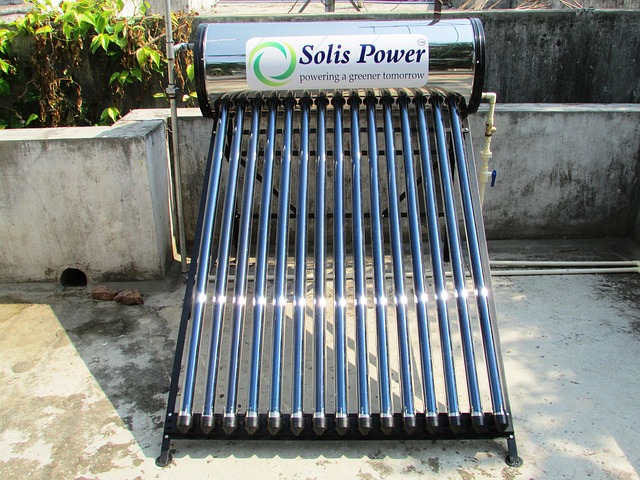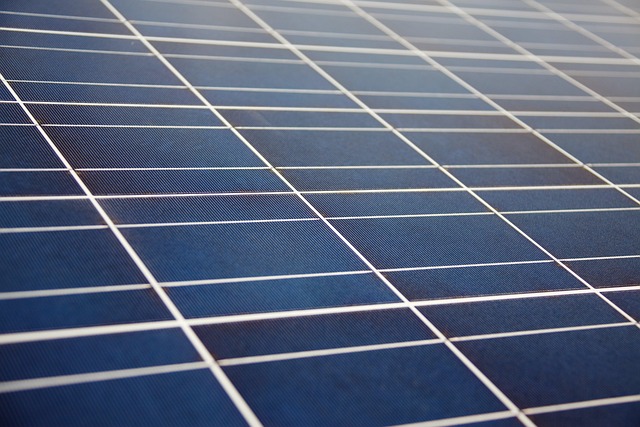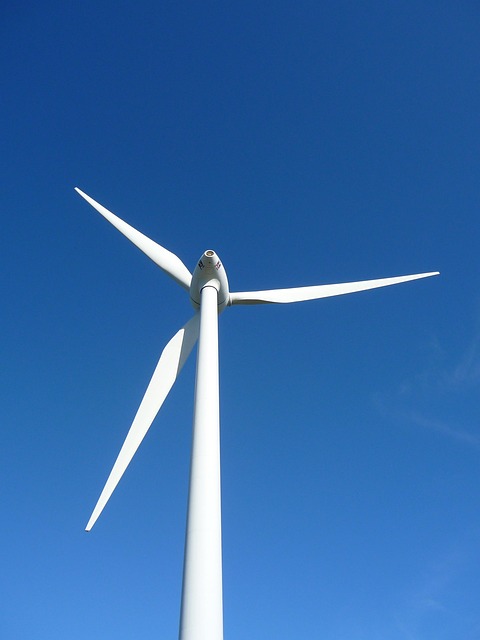
From Sunbeams to Wind Currents: Understanding Clean Energy Sources
As the world grapples with the pressing challenges of climate change and environmental degradation, the shift towards clean energy sources has become a critical focal point for governments, businesses, and individuals alike. Clean energy refers to energy derived from renewable, inexhaustible sources that produce little to no greenhouse gas emissions. This article explores the various forms of clean energy, their benefits, and their role in shaping a sustainable future.
The Importance of Clean Energy
Transitioning to clean energy offers a myriad of benefits, including reducing air pollution, enhancing energy security, and stimulating economic growth. Fossil fuel consumption is a major contributor to global warming and pollution. By harnessing renewable energy, we can significantly reduce our carbon footprint, protect public health, and preserve natural resources for future generations.
Economic Growth
The clean energy sector is one of the fastest-growing industries in the world, generating millions of jobs annually. Investment in renewable technologies stimulates innovation and creates jobs in manufacturing, installation, and maintenance. Additionally, as technology advances and production scales, the cost of clean energy continues to decrease, making it an increasingly viable option for consumers and businesses alike.
Energy Independence
Relying on fossil fuels often ties countries to volatile global markets, making them vulnerable to international price fluctuations and geopolitical tensions. Clean energy, sourced locally, can enhance energy independence and provide greater energy stability. By investing in domestic renewable resources, countries can reduce reliance on imported fossil fuels, fostering energy security and local economic growth.
Solar Energy: Harnessing Sunbeams
Solar energy is one of the most prevalent forms of clean energy. It harnesses the sun’s rays through photovoltaic panels or solar thermal technologies to generate electricity or heat. As technology advances, solar energy has become more accessible and affordable, leading to increased adoption in residential, commercial, and utility-scale applications.
How Solar Energy Works
Photovoltaic (PV) panels convert sunlight directly into electricity using semiconductor materials that exhibit the photovoltaic effect. When sunlight hits these materials, electrons are knocked loose, generating a flow of electricity. Alternatively, solar thermal systems capture heat from the sun to produce steam, which drives turbines to generate electricity.
Advantages of Solar Energy
Solar energy is abundant, widely available, and increasingly cost-effective. It can be deployed in various settings, from small residential systems to large solar farms. Moreover, solar installations typically have low maintenance requirements and can significantly reduce electricity bills for homeowners.
Challenges Facing Solar Energy
Despite its benefits, solar energy does face challenges. The intermittent nature of sunlight means that energy production varies throughout the day and year. Energy storage solutions, such as batteries, are essential to ensure a stable power supply. Additionally, land use and the energy required for manufacturing solar panels are considerations that must be addressed to minimize environmental impact.
Wind Energy: Capturing Wind Currents
Wind energy is another key player in the clean energy revolution. By harnessing wind currents through turbines, we can convert kinetic energy into electricity. Wind farms can be found both onshore and offshore, harnessing the strong and consistent winds found in coastal areas.
How Wind Energy Works
Wind turbines capture the energy of moving air. When the wind blows, it turns the blades of the turbine, which are connected to a rotor. The rotor spins a generator, producing electricity. The amount of electricity generated depends on wind speed and turbine efficiency.
Advantages of Wind Energy
Wind energy is one of the most cost-effective renewable energy sources available today. It is clean, generating no direct emissions during operation. Wind farms can be built quickly and have a small physical footprint compared to conventional power plants. Additionally, they can provide substantial economic benefits to local communities through job creation and land leasing agreements.
Challenges Facing Wind Energy
Despite its advantages, wind energy has challenges to address. Wind availability can be inconsistent, leading to fluctuations in energy supply. Environmental and aesthetic concerns also arise, as wind farms can impact wildlife habitats and landscapes. Mitigating these issues requires careful planning and advancements in turbine technology.
Hydropower: The Power of Water
Hydropower is one of the oldest and most established forms of renewable energy, utilizing the flow of water to generate electricity. It is produced by harnessing the energy of flowing or falling water, most commonly through dams on large rivers, but also through run-of-the-river systems that utilize natural water flows.
How Hydropower Works
Hydropower plants typically use a dam to store water in a reservoir. When the water is released, it flows through turbines that generate electricity. Run-of-the-river systems do not require dams and utilize the natural flow of rivers to produce power, often with less environmental impact.
Advantages of Hydropower
Hydropower is a reliable and efficient energy source that produces large amounts of electricity with low operational costs. It can provide a stable power supply and support grid stability by responding quickly to changes in electricity demand. Moreover, hydropower plants can facilitate water management, flood control, and irrigation services.
Challenges Facing Hydropower
Hydropower projects can have significant ecological impacts, including alterations to aquatic ecosystems and displacement of communities. Concerns about water quality and sedimentation must be addressed. Sustainable hydropower practices focus on minimizing these impacts while maximizing energy generation.
Geothermal Energy: Tapping Earth’s Heat
Geothermal energy utilizes heat from within the Earth to generate electricity or provide direct heating. This energy source is derived from the natural heat produced by the Earth’s molten core and radioactive decay of minerals.
How Geothermal Energy Works
Geothermal power plants convert steam or hot water from underground reservoirs into electricity. This can be done through dry steam, flash steam, or binary cycle systems, depending on the temperature and pressure of the geothermal resource. Direct-use applications involve utilizing hot water directly for heating purposes, such as in district heating systems or greenhouses.
Advantages of Geothermal Energy
Geothermal energy is a reliable and consistent source of power, capable of providing base-load electricity generation. It has a small land footprint and produces very low emissions. Additionally, geothermal plants can be located near population centers, reducing transmission losses.
Challenges Facing Geothermal Energy
Geothermal energy is location-dependent, meaning it can only be harnessed in areas with suitable geological conditions. While drilling technology has improved, initial exploration and drilling can be costly. Moreover, resource depletion is a concern if geothermal reservoirs are not managed sustainably.
Bioenergy: Energy from Organic Materials
Bioenergy is derived from organic materials, including plant matter and waste. This energy source can be used for electricity generation, heating, and transportation fuels. Bioenergy can be produced from a variety of feedstocks, including agricultural residues, dedicated energy crops, and municipal solid waste.
How Bioenergy Works
Bioenergy can be produced through various processes, including combustion, gasification, and anaerobic digestion. In combustion, organic materials are burned to produce heat, which generates steam that drives turbines for electricity. Gasification converts biomass into a gas that can be used to generate electricity or heat. Anaerobic digestion breaks down organic material in the absence of oxygen, producing biogas that can be used for heating or electricity generation.
Advantages of Bioenergy
Bioenergy is versatile and can help reduce waste and greenhouse gas emissions by utilizing organic materials that would otherwise be discarded. It can contribute to energy security by diversifying energy sources and can also support rural economies by creating jobs in agriculture and energy production.
Challenges Facing Bioenergy
While bioenergy has many benefits, it is not without challenges. The competition for land and resources between food and energy production can drive food prices higher and may lead to deforestation if not managed sustainably. Additionally, the emissions produced from burning biomass can be significant, requiring careful consideration of feedstock sourcing and processing methods.
The Future of Clean Energy
The transition to clean energy is not just a technological shift but a cultural and policy one. Governments around the world are setting ambitious targets to reduce greenhouse gas emissions and promote renewable energy. Innovations in energy storage, smart grids, and energy efficiency technologies are further paving the way for a clean energy future.
Policy and Investment
Government policies play a crucial role in promoting clean energy investment and deployment. Incentives such as tax credits, subsidies, and renewable portfolio standards have proven effective in stimulating growth in the renewable energy sector. International agreements, such as the Paris Agreement, also encourage countries to commit to ambitious climate goals.
Public Awareness and Education
Public awareness and education about clean energy benefits are essential for promoting sustainable practices. Grassroots movements, advocacy campaigns, and educational programs can help empower individuals to make informed choices about energy consumption, ultimately driving demand for clean energy solutions.
Technological Innovations
The future of clean energy will rely heavily on technological advancements. Innovations in energy storage (e.g., batteries), grid modernization, and digital technologies will enhance the efficiency and reliability of clean energy systems. Research and development efforts are ongoing, aiming to drive down costs and improve performance in the renewable energy sector.
Conclusion
The journey towards a clean energy future is fraught with challenges, but the benefits are undeniable. From harnessing the power of sunbeams and wind currents to tapping into the Earth’s core and utilizing organic materials, clean energy offers a path to a sustainable, resilient, and equitable future. As individuals, communities, and nations continue to embrace renewable energy sources, we can work collectively to ensure a healthier planet for generations to come.



